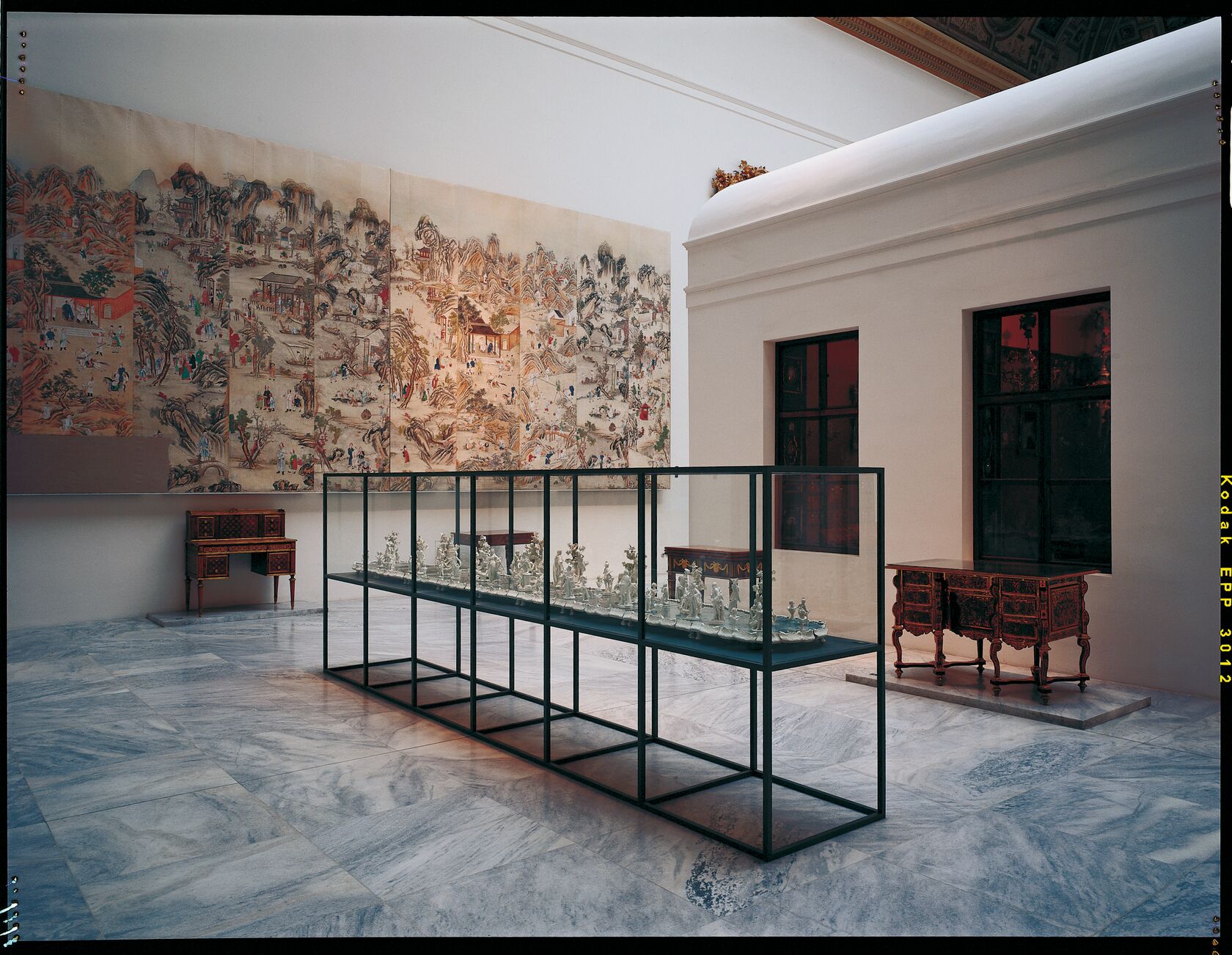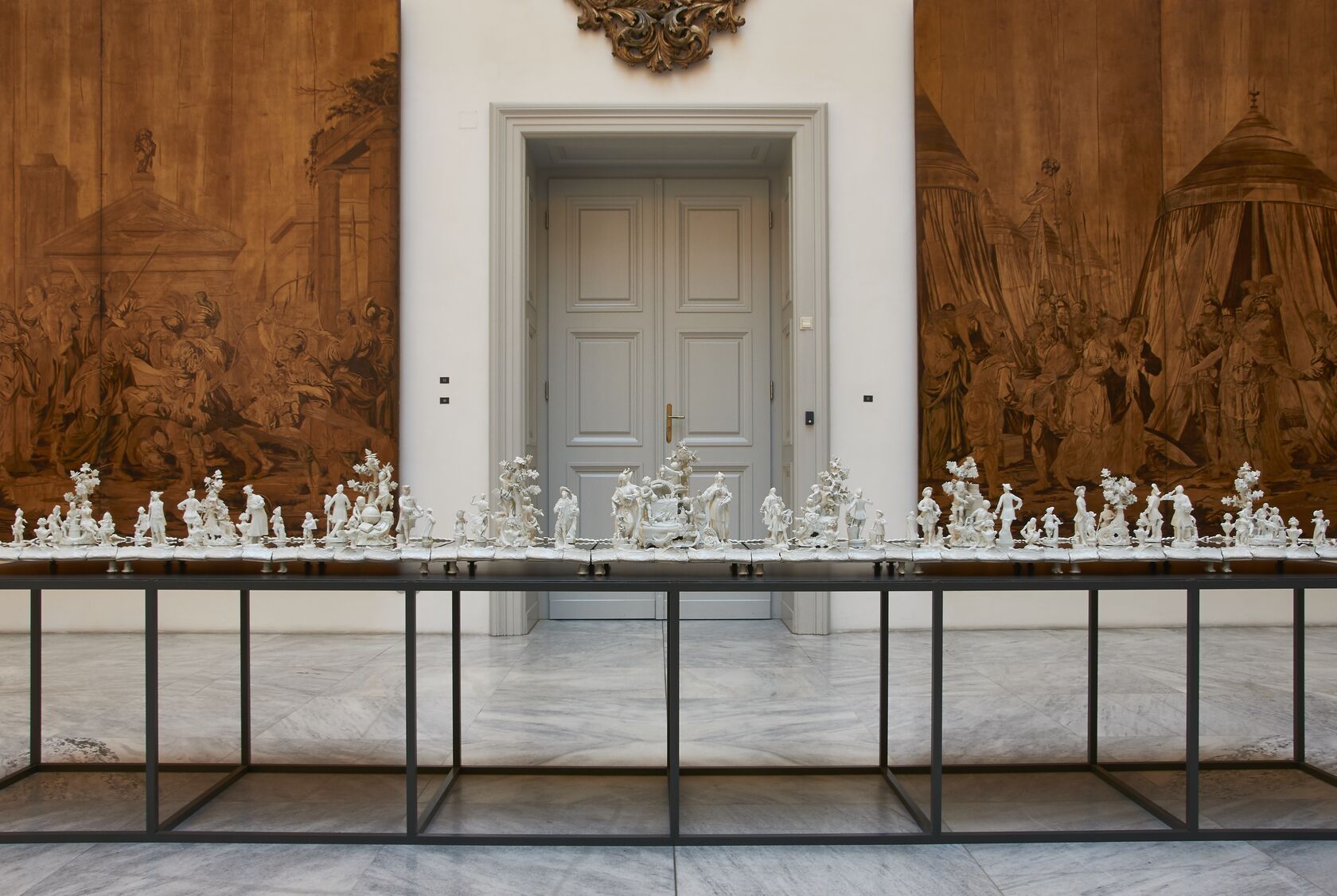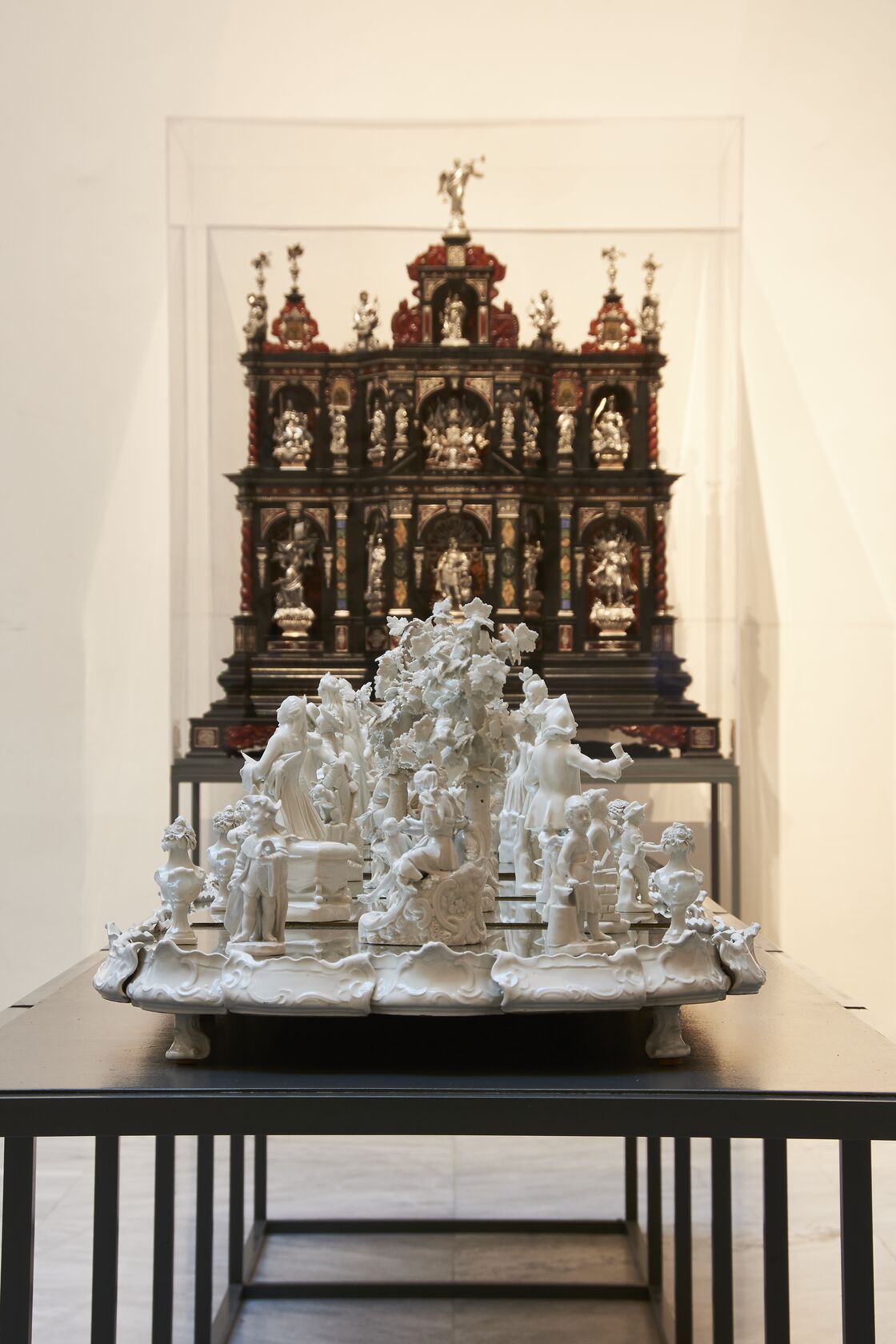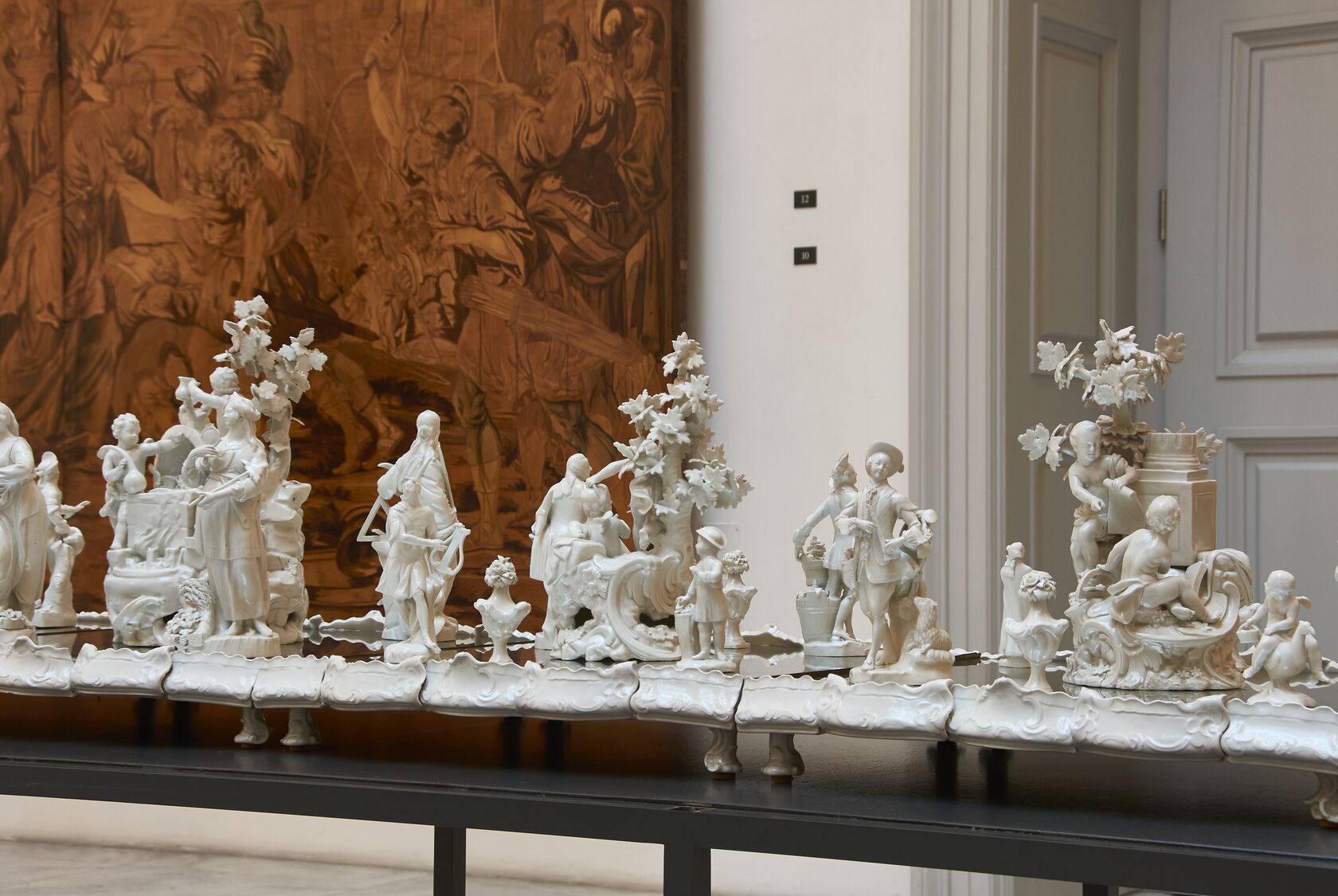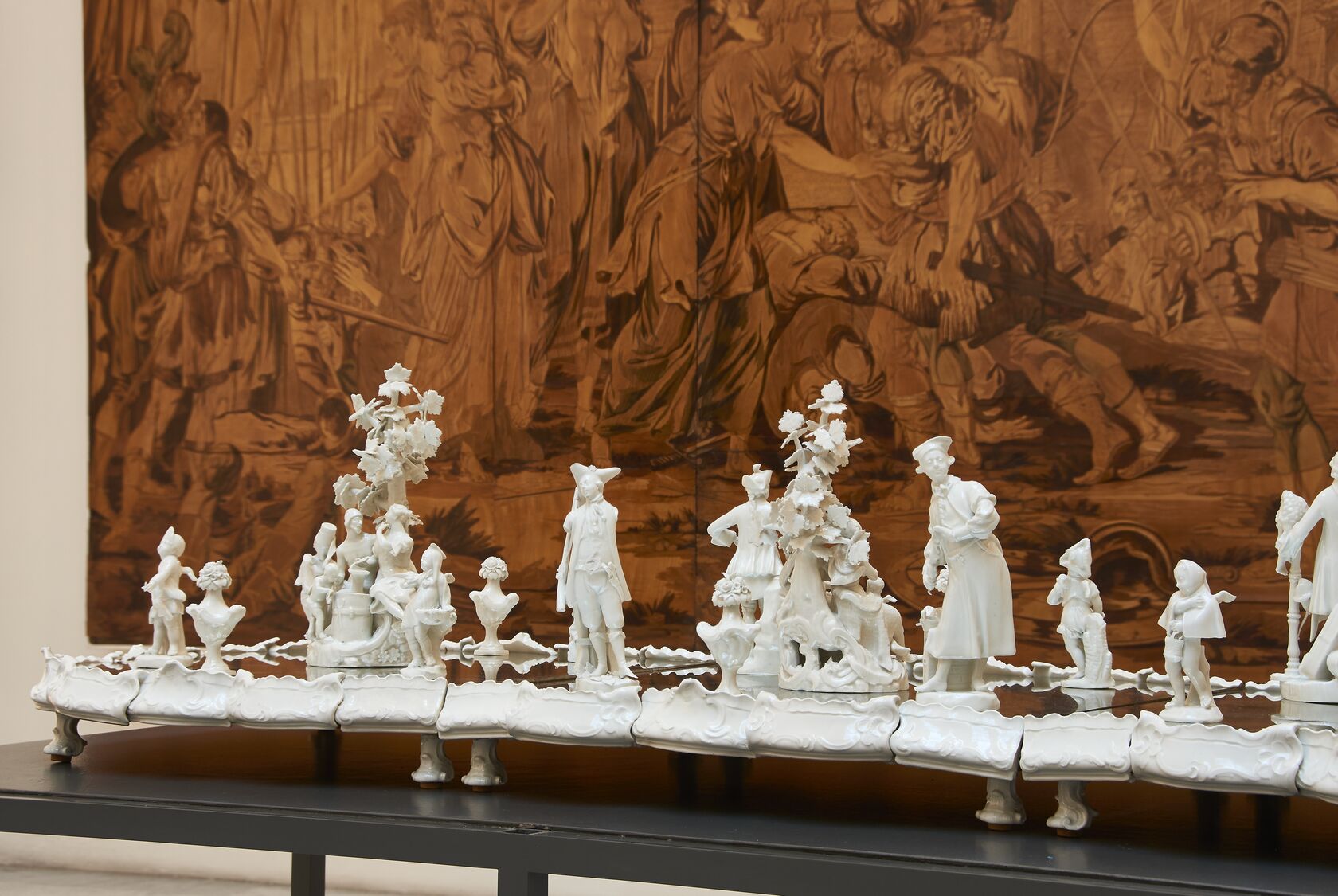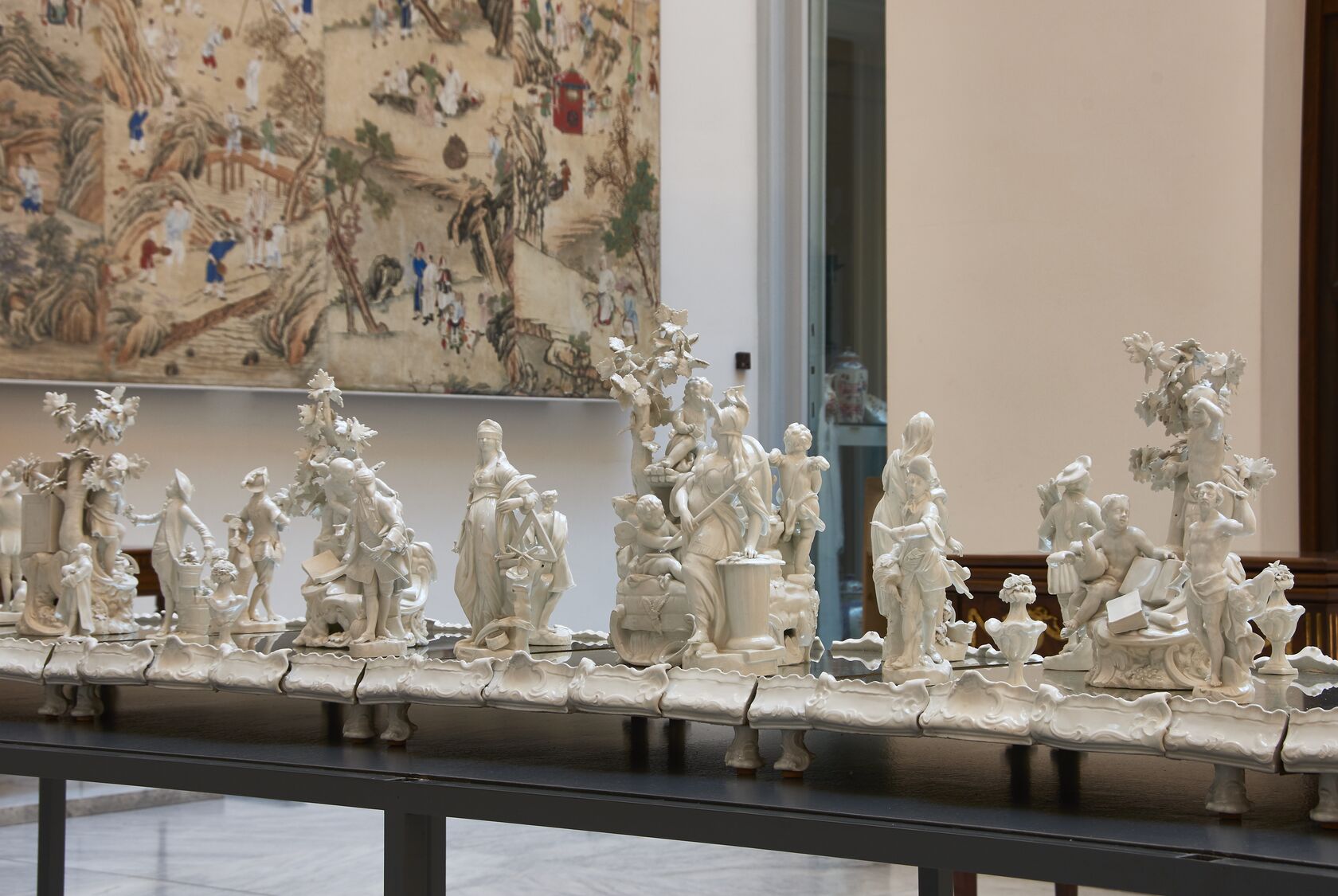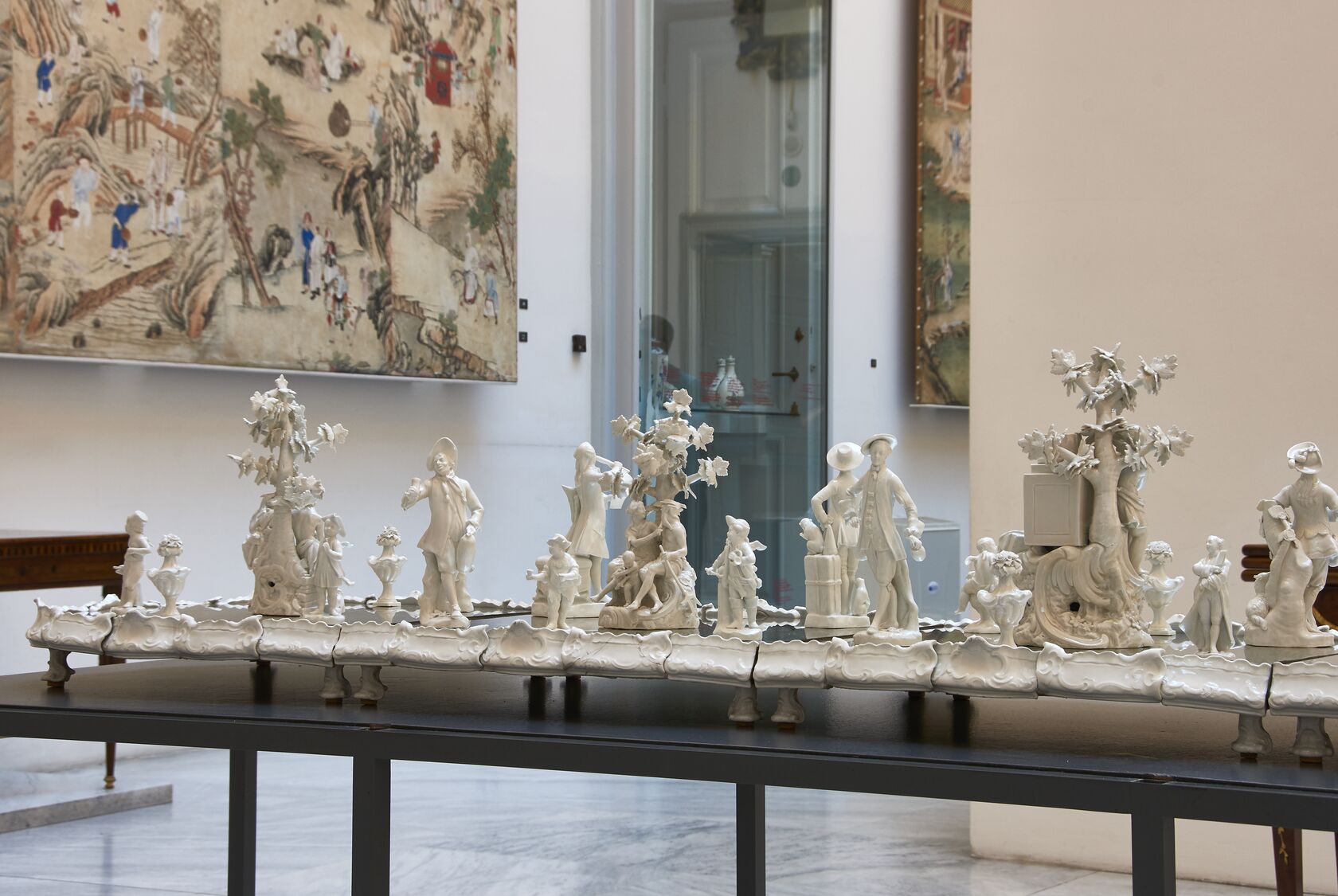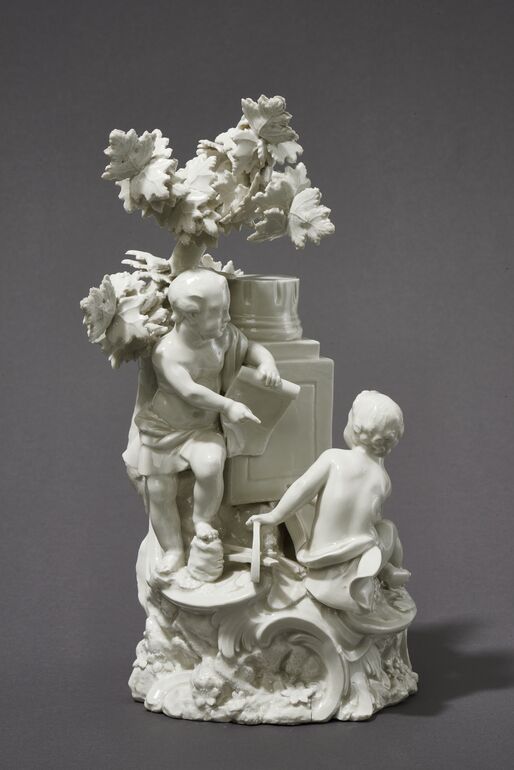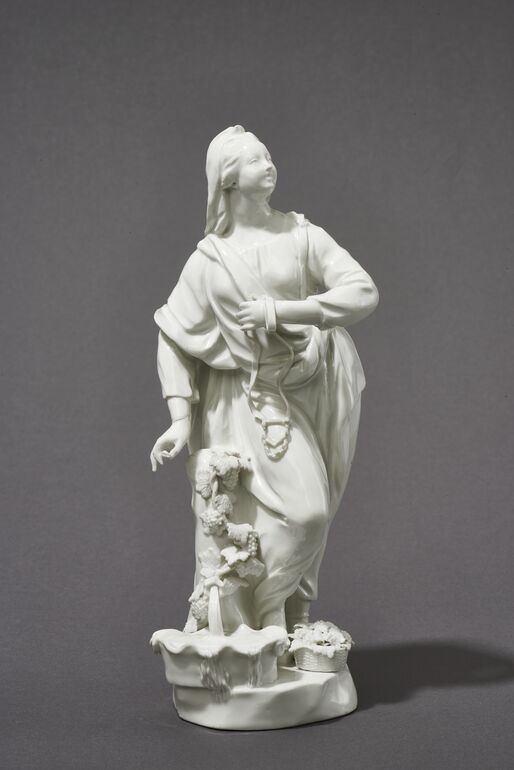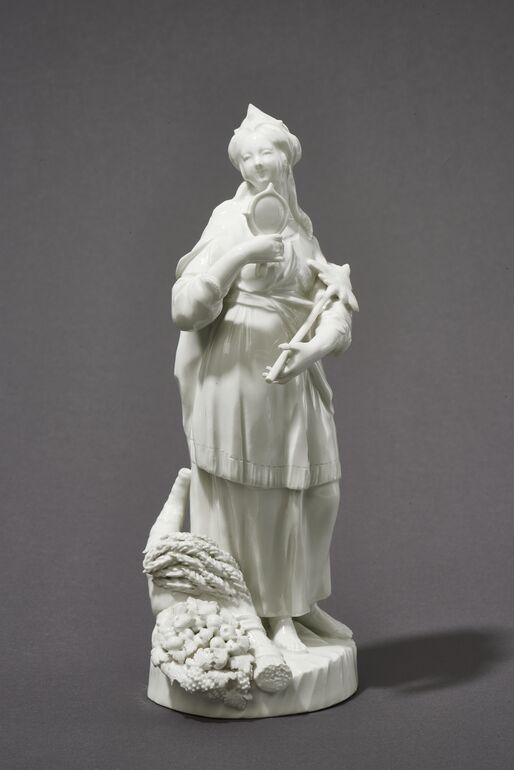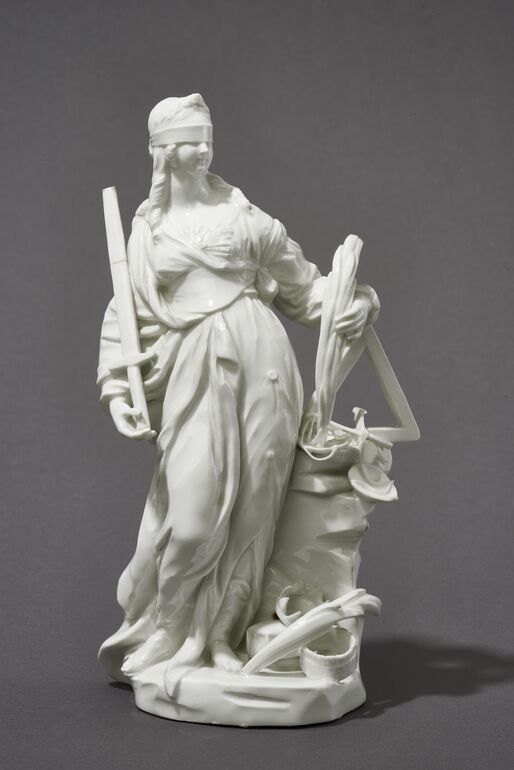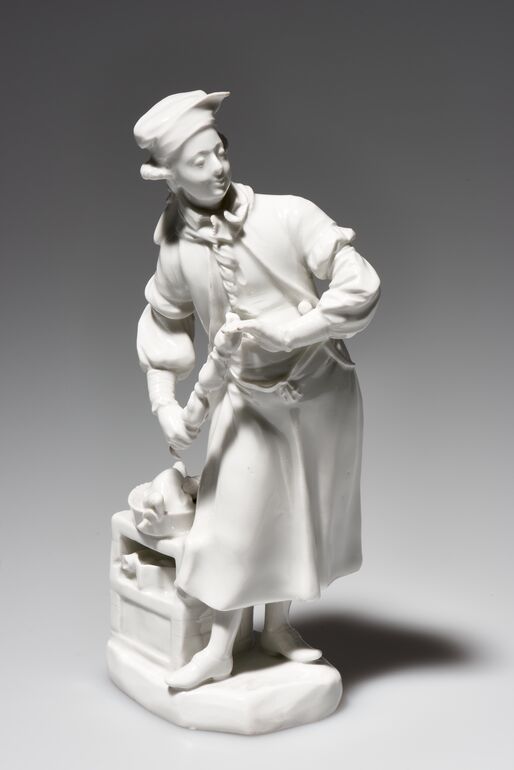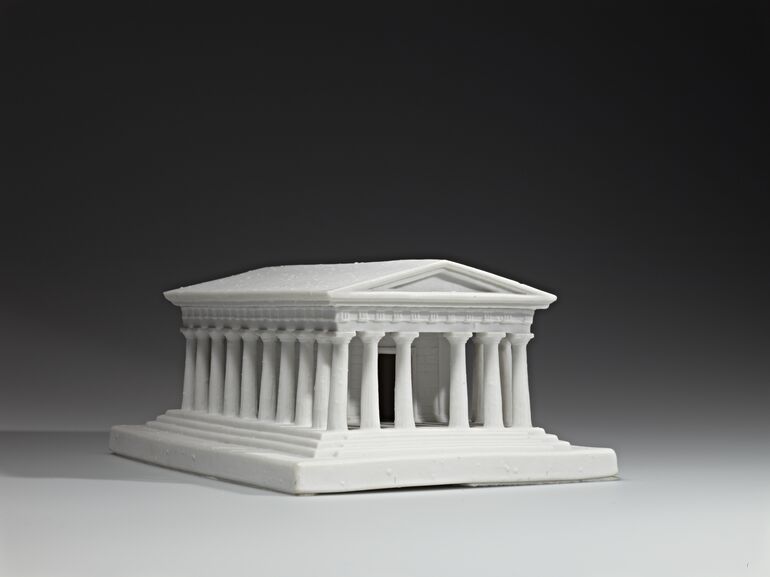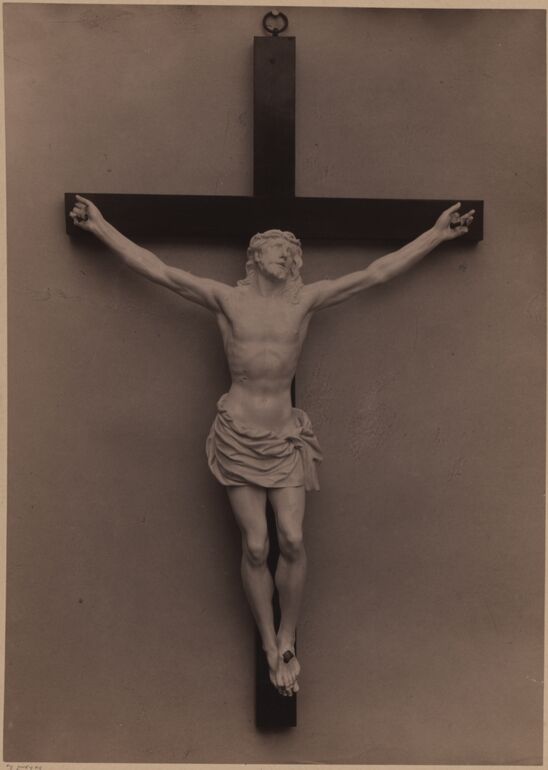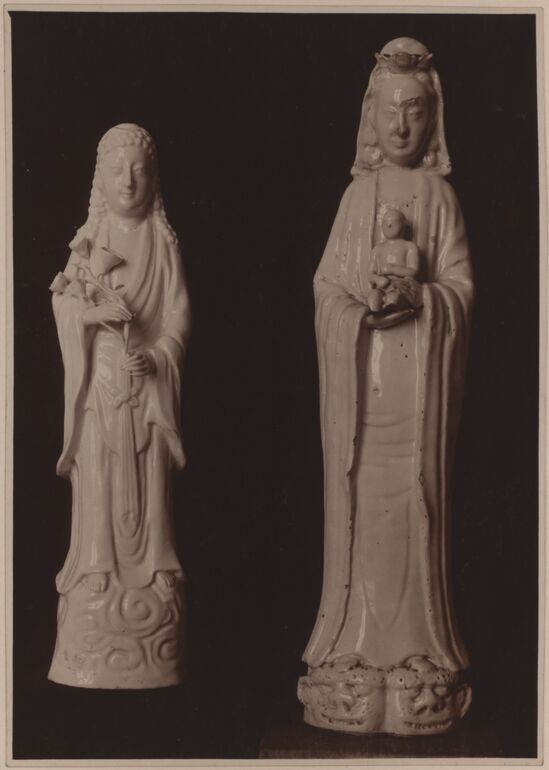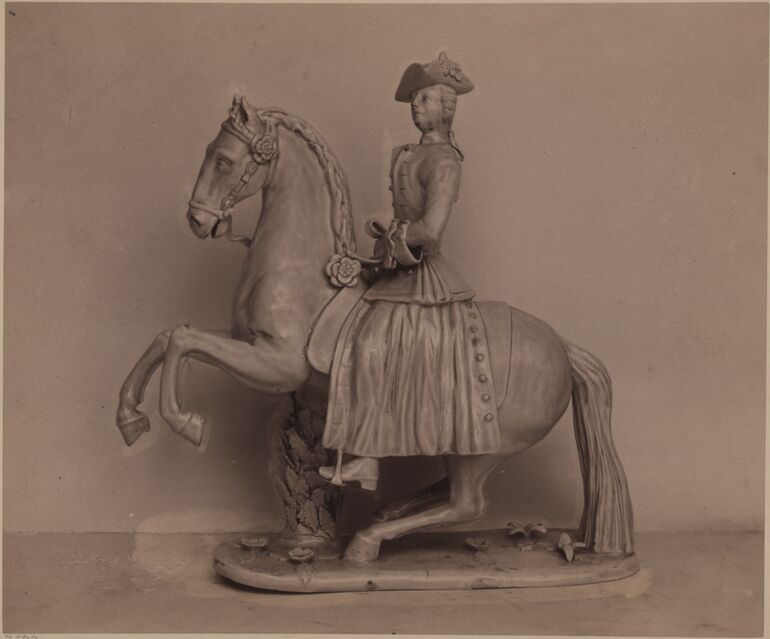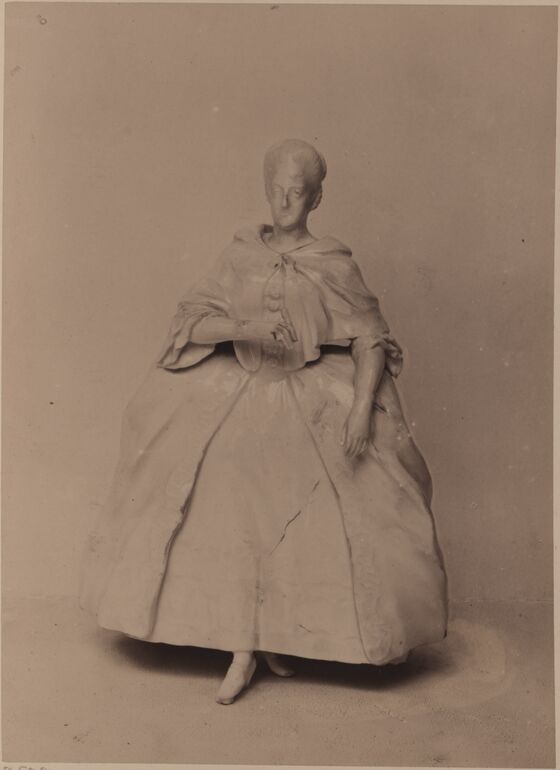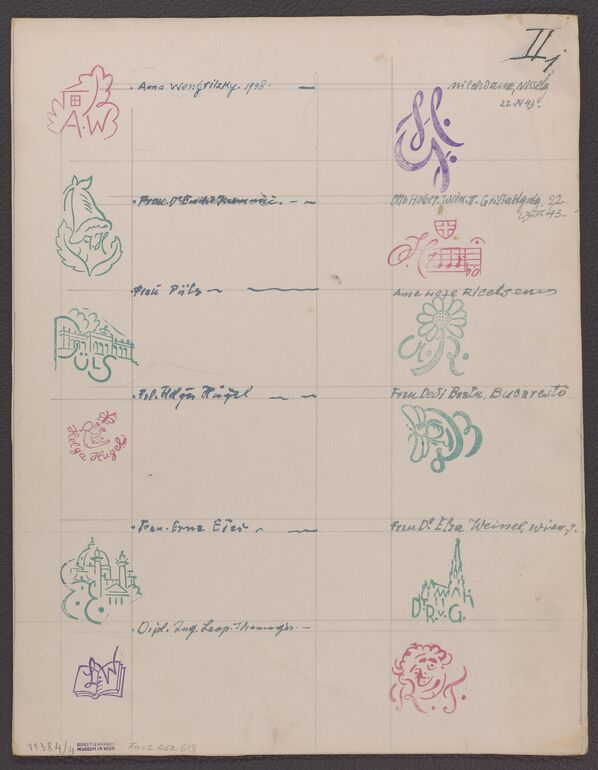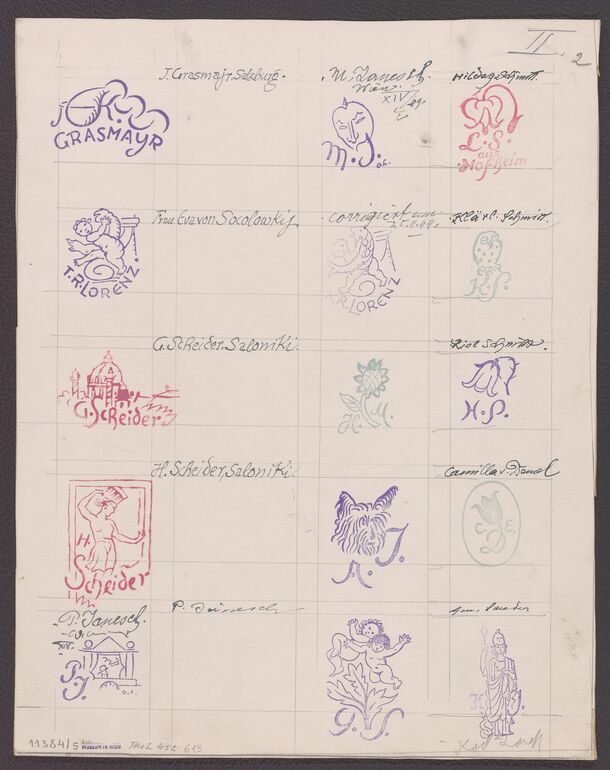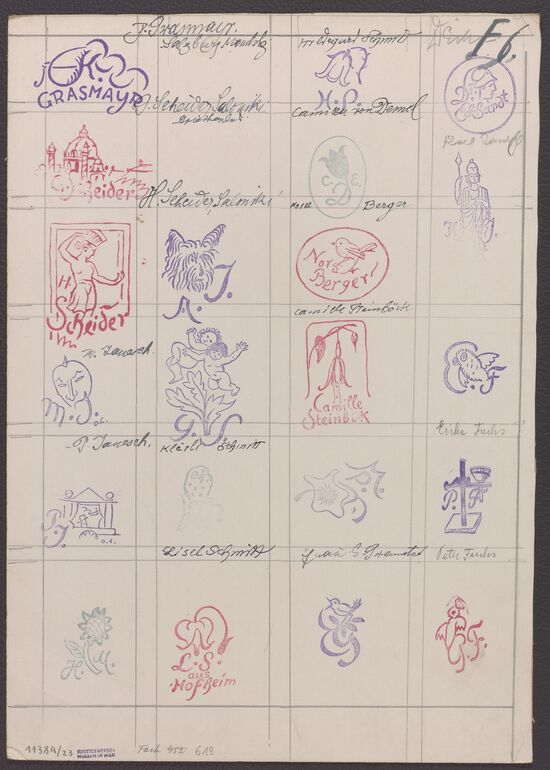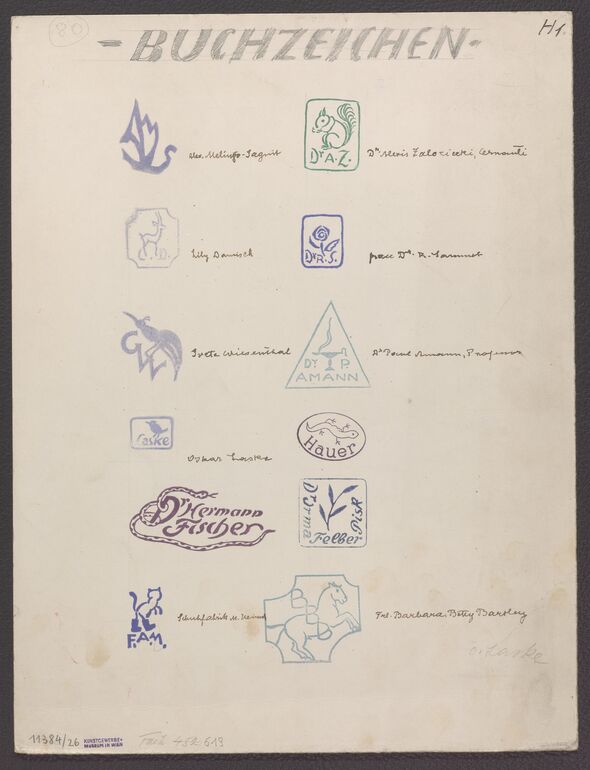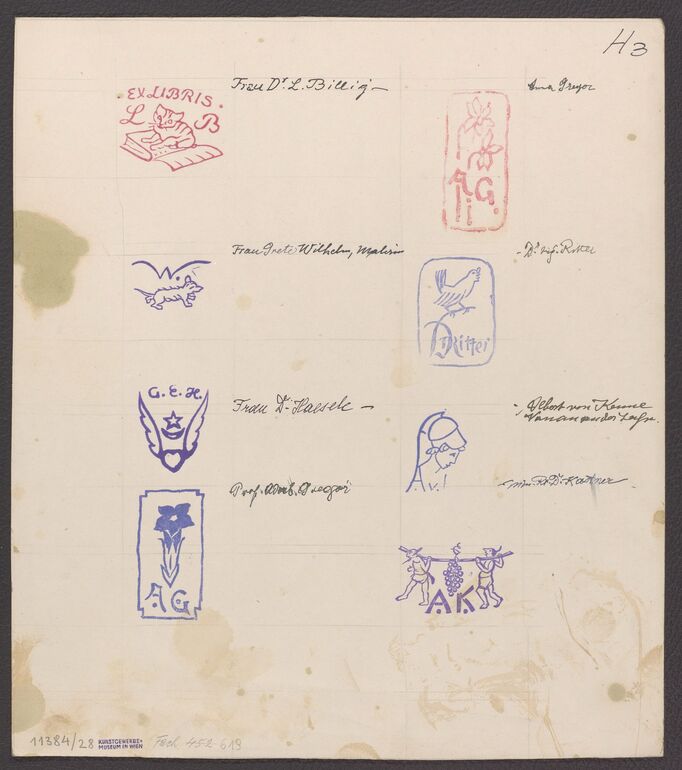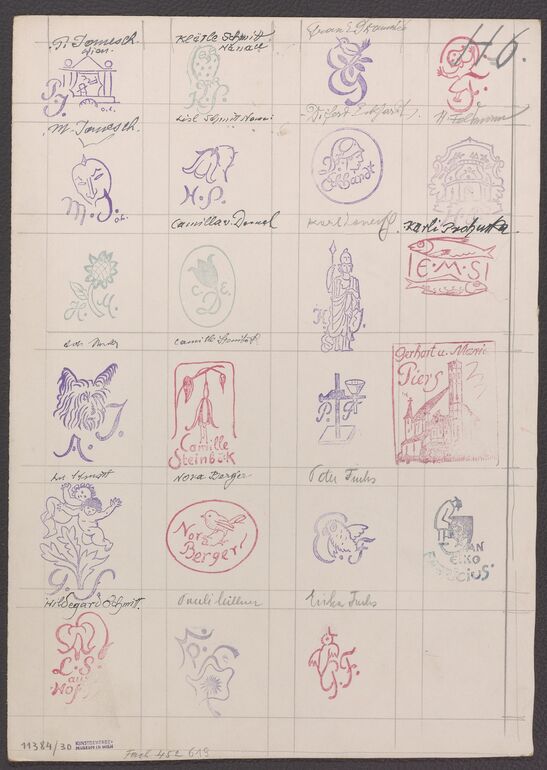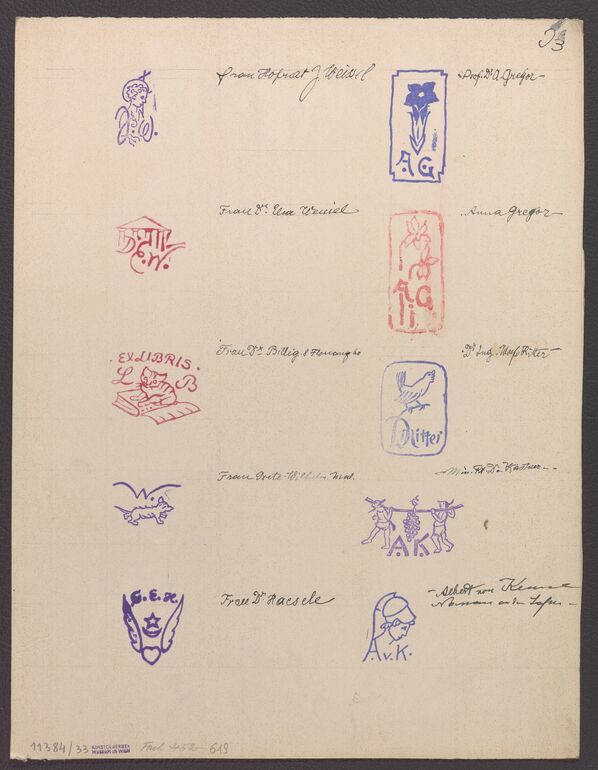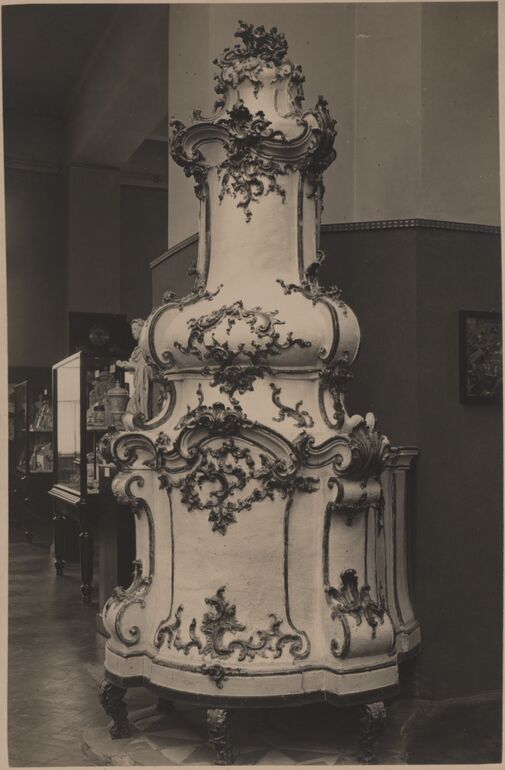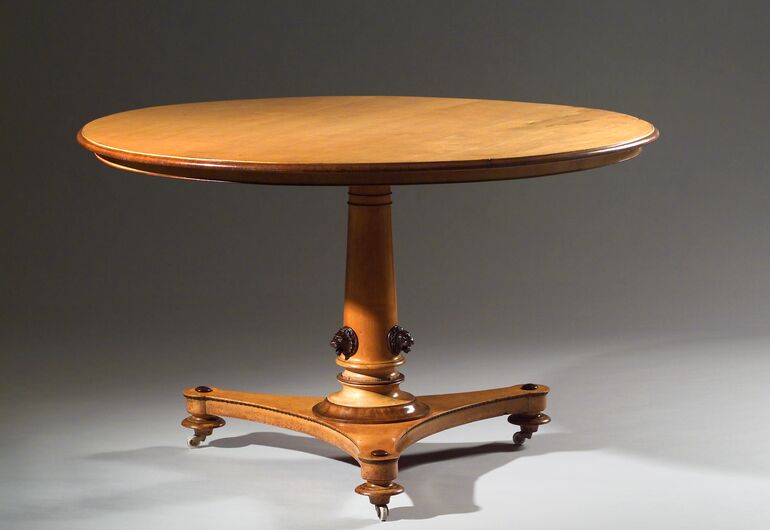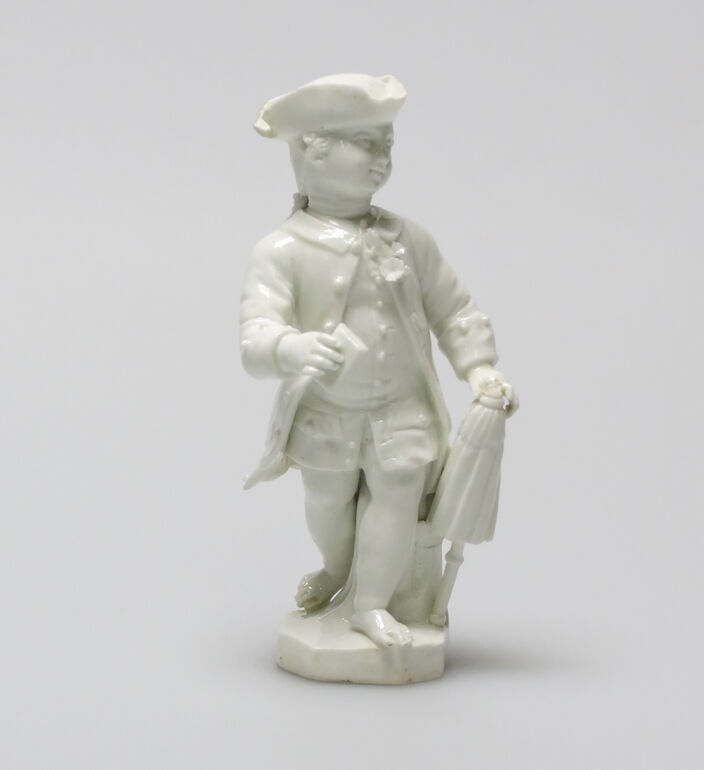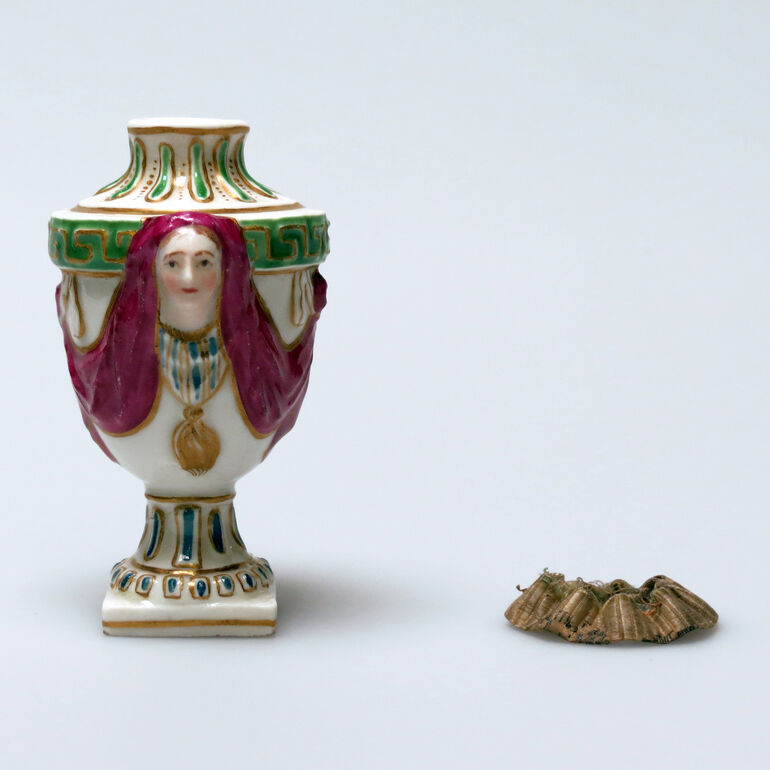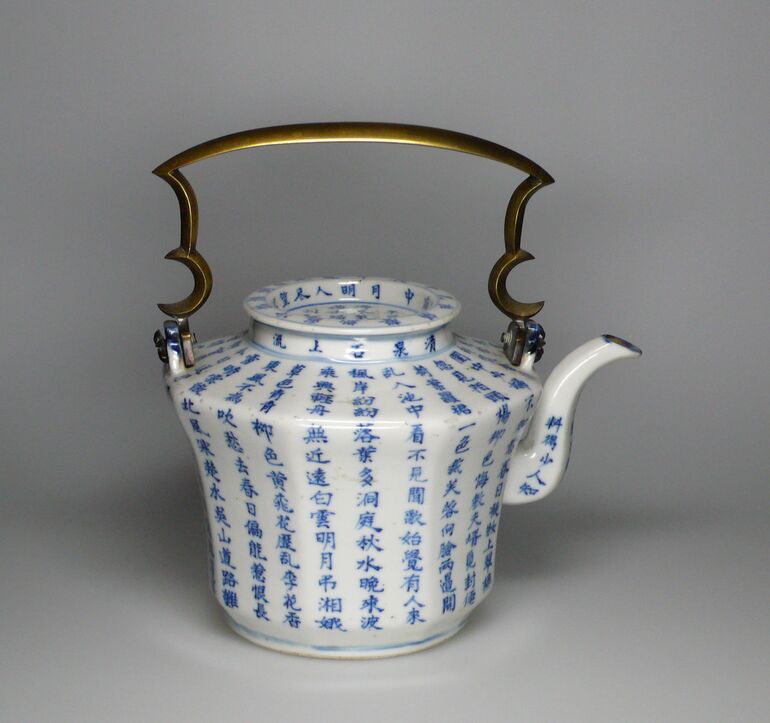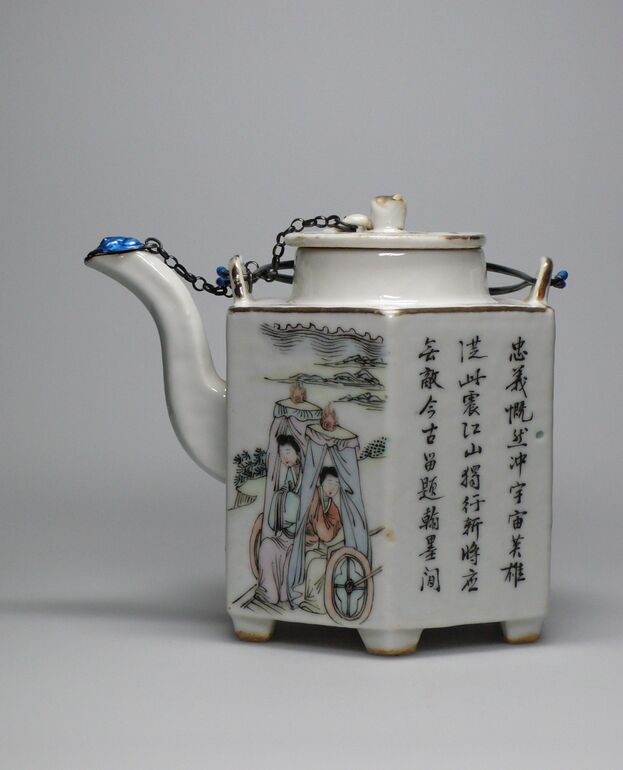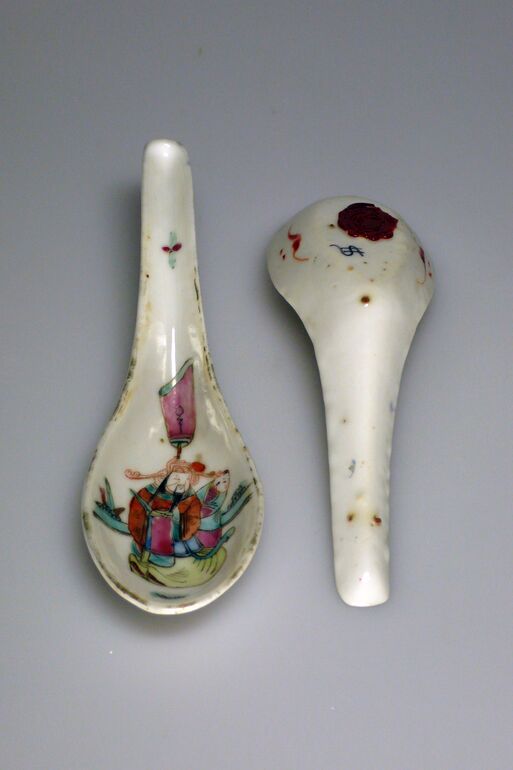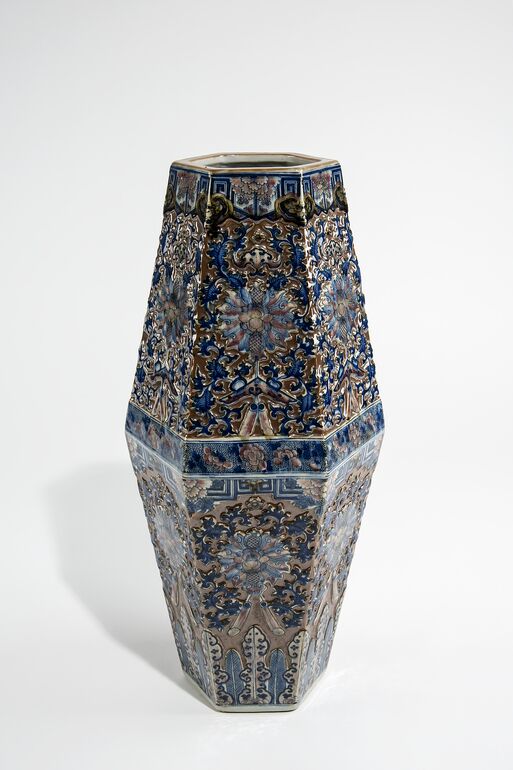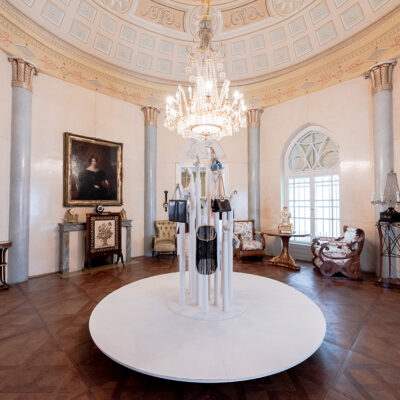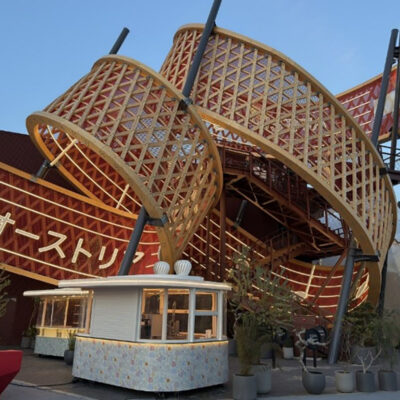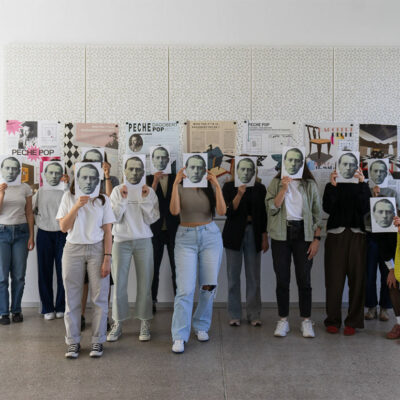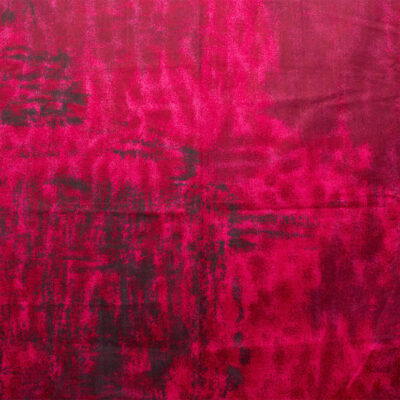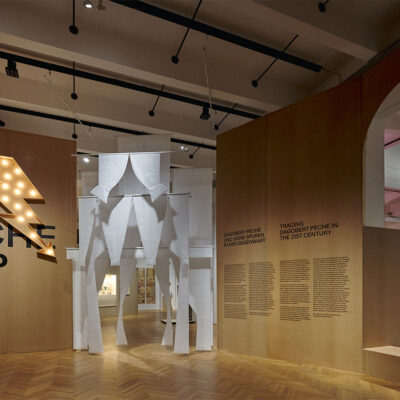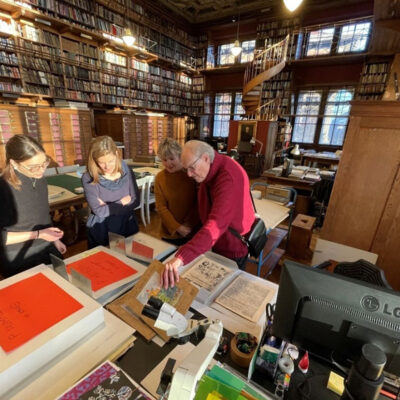1/12
Title
- Zwettl Centerpiece
Collection
Production
- manufacturer: Vienna Porcelain Manufactory, Vienna, 1767 - 1768
Subject
Inventory number
- KE 6823
Acquisition
- purchase , 1926-04-26
Department
- Glass and Ceramics Collection
Parts
- group, Neptun und Amphitrite
- group, Allegorie der lyrischen Dichtung
- group, Allegorie der dramatischen Dichtung
- group, Allegorie der Architektur
- group, Allegorie der Astronomie
- group, Die Porzellanerzeugung
- group, Apoll und Thespis
- group, Zwei Sitzfiguren mit kleiner Amorette
- group, Venus und Vulkanus
- figure, Temperantia
- figure, Prudentia
- figure, Justitia
- figure, Äolus
- figure, Apoll
- figure, Jäger
- figure, Branntweiner
- figure, Koch mit Bratspieß
- figure, Gärtner als Frühling
- figure, Schäfer auf Baumstamm gelehnt
- figure, Schnitter als Sommer
- figure, Perückenmacher
- figure, Stehende Figur mit Bauchladen
- figure, Kavalier mit Korbflasche
- figure, Bergmann
- figure, Kavalier mit Äffchen
- figure, Sänger
- figure, Kavalier mit Stock
- figure, Schlittschuhläufer als Winter
- figure, Kavalier mit Muff
- figure, Kavalier mit Tafel
- figure, Amorette als Kellermeister
- figure, Amorette als Fechtmeister
- figure, Amorette als Soldat
- figure, Amorette als Postillon
- figure, Amorette mit langem Stock
- figure, Amorette als Schauspieler
- figure, Amorette als Maurer
- figure, Amorette als Schmied
- figure, Amorette mit Hacke
- figure, Amorette mit Kapuzenmäntelchen
- figure, Amorette als Gemüsehändler
- figure, Amorette als Bäcker
- figure, Amorette als Zuckerbäcker
- figure, Amorette als Fischhändler
- figure, Amorette auf einem Huhn reitend
- vase, kleine Blumenvase
- vase, kleine Blumenvase
- vase, kleine Blumenvase
- vase, kleine Blumenvase
- vase, kleine Blumenvase
- vase, kleine Blumenvase
- vase, kleine Blumenvase
- vase, kleine Blumenvase
- vase, kleine Blumenvase
- vase, kleine Blumenvase
- vase, kleine Blumenvase
- vase, kleine Blumenvase
- vase, kleine Blumenvase
- vase, kleine Blumenvase
- vase, kleine Blumenvase
- tray / coaster / stand, Rocaillenuntersatz mit Spiegelauflage
- tray / coaster / stand, Rocaillenuntersatz mit Spiegelauflage
- tray / coaster / stand, Rocaillenuntersatz mit Spiegelauflage
- tray / coaster / stand, Rocaillenuntersatz mit Spiegelauflage
- tray / coaster / stand, Rocaillenuntersatz mit Spiegelauflage
- tray / coaster / stand, Rocaillenuntersatz mit Spiegelauflage
- tray / coaster / stand, Rocaillenuntersatz mit Spiegelauflage
- tray / coaster / stand, Rocaillenuntersatz mit Spiegelauflage
- figure, Fortitudo
- tray / coaster / stand, Rocaillenuntersatz mit Spiegelauflage
Associated Objects
- photograph, Fotografie eines Porzellan-Tafelmilieus mit diversen Figuren und Figurengruppen, von der Kaiserlichen Porzellanmanufaktur Wien von 1768
- photograph, Fotografie eines Porzellan-Tafelmilieus mit diversen Figuren und Figurengruppen, von der Kaiserlichen Porzellanmanufaktur Wien von 1768
- photograph, Fotografie eines Porzellan-Tafelmilieus mit diversen Figuren und Figurengruppen, von der Kaiserlichen Porzellanmanufaktur Wien von 1768
- photograph, Fotografie eines Porzellan-Tafelmilieus mit diversen Figuren und Figurengruppen, von der Kaiserlichen Porzellanmanufaktur Wien von 1768
Description
-
To mark the 50th anniversary of Abbot Rayner Kollman’s religious vows in 1768, the Cistercian Abbey of Zwettl prepared a prestigious gift in his honor: for 600 guldens, they had a portrait of the jubilarian, a cantata by Joseph Haydn, and a porcelain centerpiece made—the latter was created in the Imperial and Royal “Porcellaine fabrique” in Vienna. This centerpiece was designed for 30 people and comprised 9 dessert boards with mirrors and white porcelain borders, a main group in the center, 4 large and 4 small subgroups, 18 “simple” and 18 “small figures,” 18 flower vases, and finally 48 soup bowls, 72 sweetmeat dishes, 8 salt cellars, and 2 “saucières”—a flamboyant gift that would cost 488 guldens and 20 kreuzers in total.
On 7 February 1768, the centerpiece arrived in Zwettl—but without a clear concept: The delivery of four tall white figures that followed in March was the attempt to alter the object’s iconology to such an extent that it might seem appropriate as a gift for an abbot: The main group comprises porcelain production, surrounded by other arts: architecture, poetry/literature, drama, astronomy, and geography. The intention here is to express a “triumph of porcelain production,” surrounded by those fields of knowledge to which it owes the subjects it portrays. In no way connected to this thematic core are the four double groups under trees—divine couples in which Paris and Venus, Neptune and Amphitrite, Apollo and a Muse, as well as Venus and Vulcan appear. The chinoiserie and cherubs, as well as the humorous depictions of merchants, were also hardly compatible with the religious context.
Ultimately, the gestural effort outweighed the content. When an inventory of the monastery was drawn up in 1776, the possession of the luxurious table centerpiece was already considered problematic—a symbol of the tensions between monastic life and secular culture of representation.
The Austrian Museum of Art and Industry (now MAK) acquired the centerpiece from Zwettl Abbey in 1926.
(Rainald Franz, 2025)
See More:
Exhibition
On display
on display
-
group, Zwettl Centerpiece, Kaiserlich-königliche Porzellanmanufaktur Wien, MAK Inv.nr. KE 6823
Last update
- 26.09.2025
